“The library in the forest” is ready for Manitoba students and other visitors interested in learning both in and from one of the largest standing birch tree populations in the province.
The Lord Selkirk School Division celebrated the grand reopening of a forgotten field trip site near Albert Beach on Thursday, roughly two decades after the once-popular camping destination was largely abandoned.
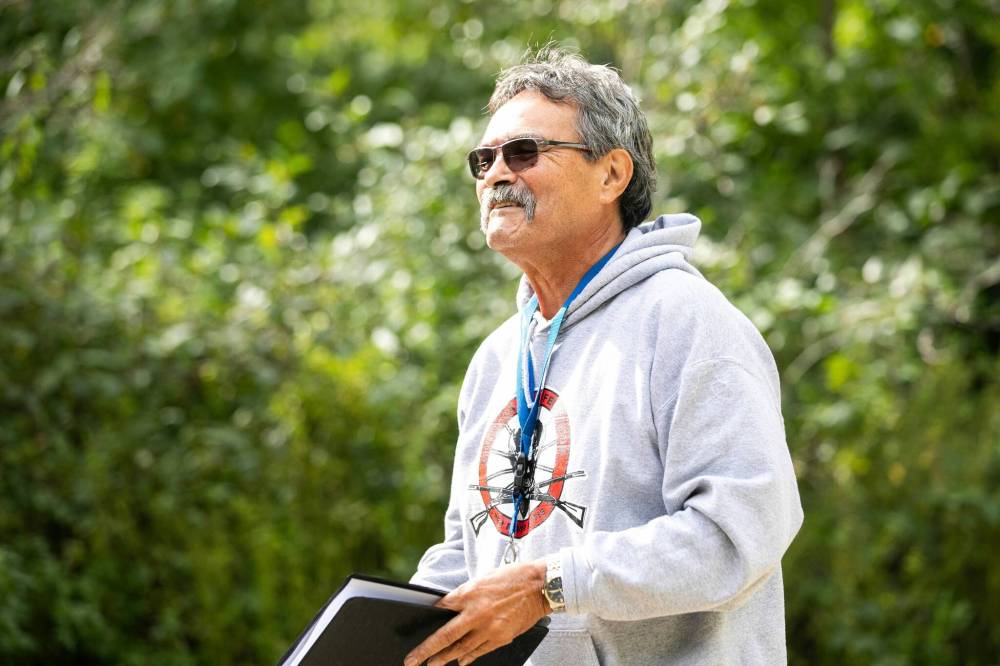
The 51-acre lot, much of which is boggy woodlands, was recently spruced up with a roughly one-kilometre pathway that winds through a natural boreal forest and open activity space.
The division has installed a picnic shelter, tables and toilets to accommodate group visits to the revitalized outdoor education space officially known as Albert Beach Trail, a nod to the neighbouring cottage community.
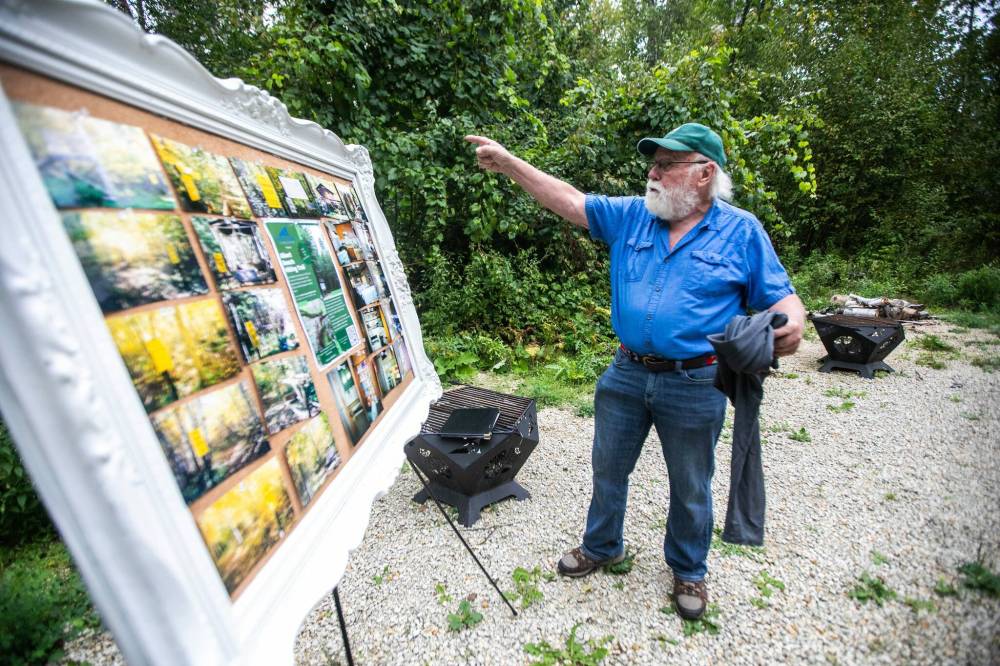
“Welcome, ladies and gentlemen, to the library in the forest — and that’s what it is. It’s here for us to learn,” Henry Hall, a Métis elder and knowledge keeper in the division, told a crowd gathered on the grounds that are accessible via 55 Christopher St.
Gesturing to the birch trees blowing in the wind around him, Hall declared the site “a giant book of learning knowledge and of survival.”
A shared view by many Indigenous people is that humans are “borrowing the land from future generations” and thus, it is their responsibility to be stewards who respect and protect it, he said, adding he hopes all visitors develop a greater appreciation for Mother Earth.
The lot was transferred to the division’s real estate portfolio after its inception in 1967, as a result of the amalgamation of independent and public schools in and around lake Winnipeg’s East Beaches.
The Selkirk-based administration discovered it was the unlikely owner of the parcel of land in 1975. When a group of outdoorsy teachers learned about its existence, they began organizing tenting trips to the forest, pruning and fundraising to build cabins.
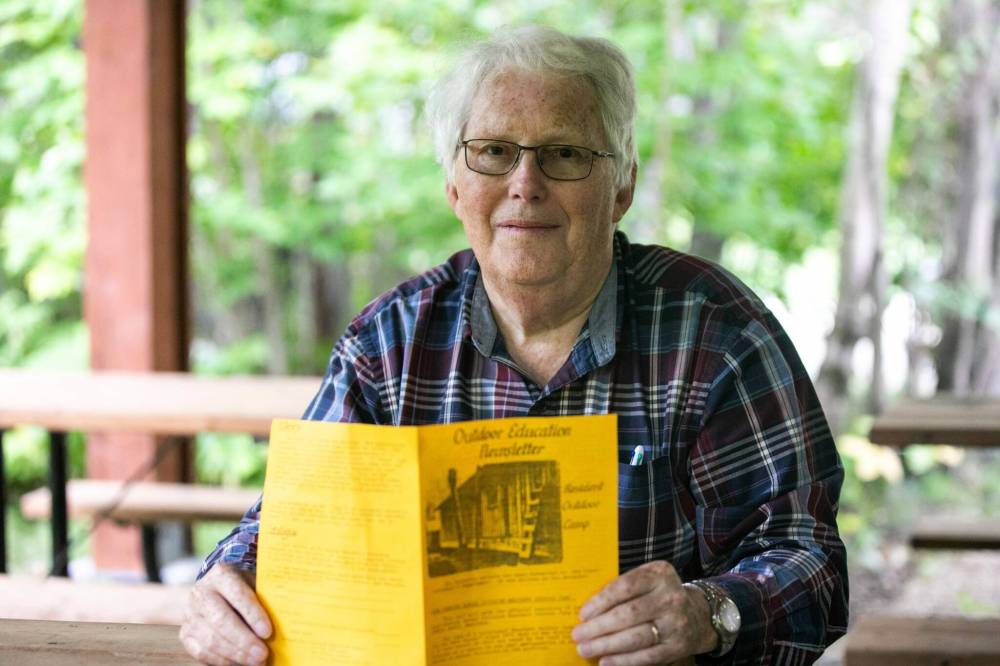
“The site, if you go way back in history, (is where fur traders and First Nations travellers) would stop, here, and repair their birch-bark canoes because this is one of the best stands of birch,” said John Perry, a retired teacher who earned the nickname “Mr. Albert Beach” because of his passion for outdoor education and leveraging the space to build relationships with and between students.
Perry helped build a series of cabins on the grounds that were frequented by division staff and students between 1872 and 2005, when the structures were deemed unsafe due to updated building codes.
For him, the site’s renewal is both a happy and sad occasion because it is a reminder of all the work that was torn down; the grand reopening ceremony took place in the exact spot where a main lodge once stood.
Perry said he wants the division to follow through on its long-term goal of rebuilding cabins so overnight trips can resume.
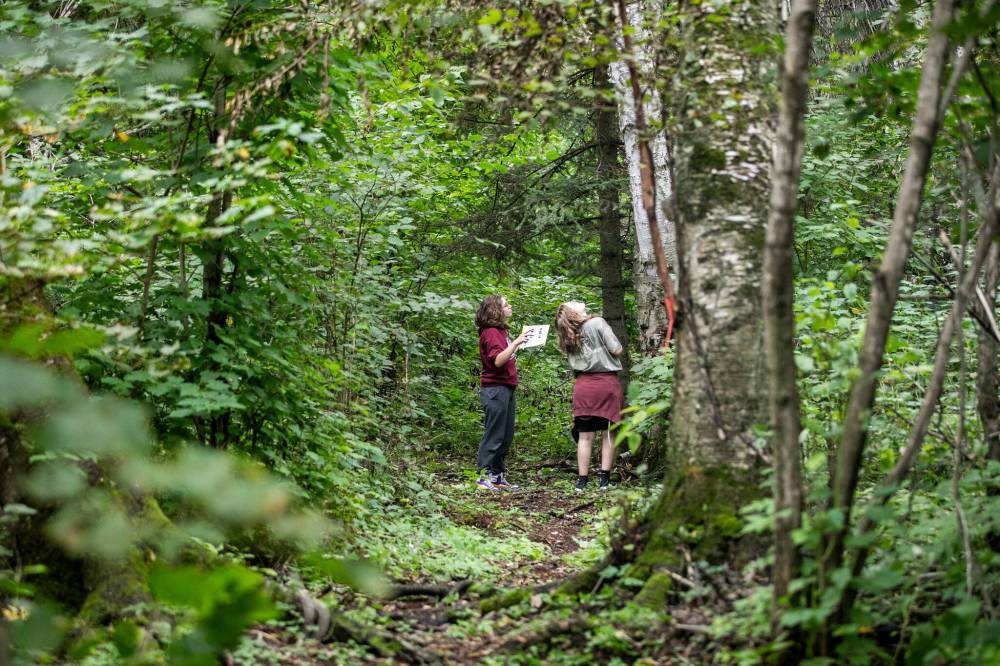
The completion of the initial revitalization phase was marked on Thursday with superintendent Jerret Long, teacher Jodi Forfar and Grade 9 student Kasey Forman cutting a royal blue ribbon at the trailhead with a pair of oversized scissors.
Long said students will learn about ecosystems, conservation, reconciliation, “and what it means to have the land as a teacher” during field trips to the modern iteration of the site.
“It’s not just a path through the woods. It’s a gateway to land-based learning and exploration to environmental stewardship. Here, our students and staff will be able to engage with nature in ways classrooms cannot fully capture,” he said.
Kasey, 14, volunteered to be part of a trial trip from Lockport School to Albert Beach Trail when the division had a soft launch last year. It’s been special to play a part in the historic reopening, she said.
The Selkirk teen’s highlight from the latest visit? “We found lots of mushrooms on the trail and there’s leaves that were changing on the trees,” she said, adding she would encourage other teachers to bring students out so they, too, have more opportunities to learn about nature.
A group of students who took part in Thursday’s visit was assigned a scavenger hunt checklist following the ribbon-cutting event.
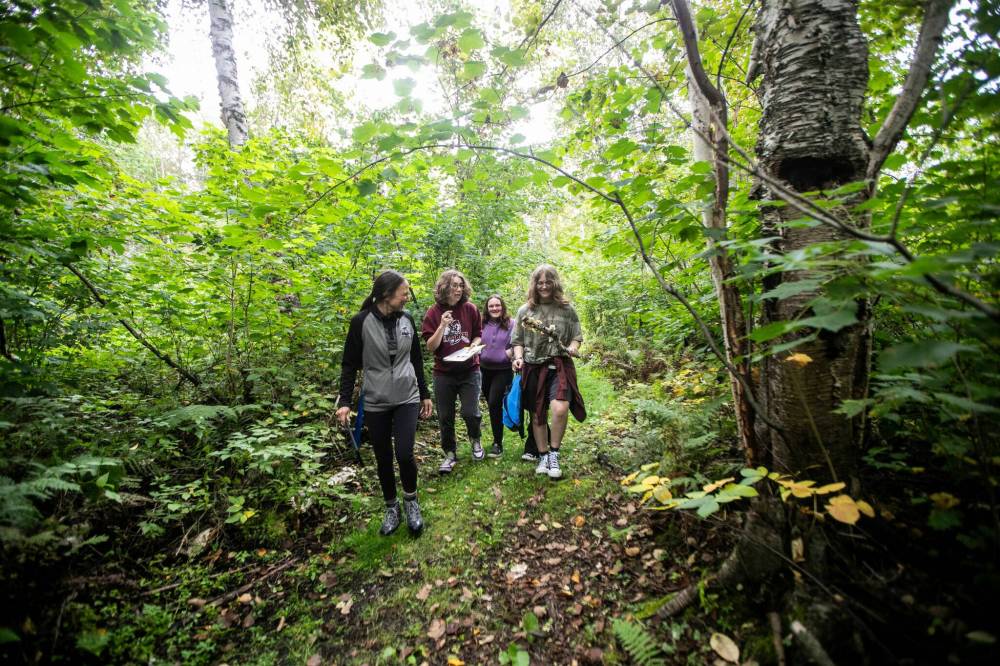
Teens were tasked with searching for moss, spider webs and animal tracks, among other elements that make up the natural landscape at this time of year.
“We’ve had rain, we’ve dealt with mud, we’ve dealt with dry conditions, sunny conditions, all of it and every time, regardless of the conditions, they’ve had a really good time,” said Forfar, a science teacher at Lockport School and founding member of the division’s site revitalization committee.
“I see the joy on their faces and we all go back to school in a better place than when we came.”
She noted the feel-good chemicals that are released when immersed in nature and how important it is that 21st century students, many of whom have a “nature deficit,” get acquainted with the land they live on.
“Without having students have an awareness of our natural environment, how do we preserve it?” Forfar added.
The field trip destination is located about 100 kilometres north of the Perimeter Highway. It is free for community use, but the division charges $100 per day to out-of-division schools to cover the cost of upkeep.
maggie.macintosh@freepress.mb.ca

Maggie Macintosh
Education reporter
Maggie Macintosh reports on education for the Free Press. Originally from Hamilton, Ont., Maggie was an intern at the Free Press twice while earning her degree at Ryerson’s School of Journalism (now Toronto Metropolitan University) before joining the newsroom as a reporter in 2019. Read more about Maggie.
Funding for the Free Press education reporter comes from the Government of Canada through the Local Journalism Initiative.
Every piece of reporting Maggie produces is reviewed by an editing team before it is posted online or published in print — part of the Free Press‘s tradition, since 1872, of producing reliable independent journalism. Read more about Free Press’s history and mandate, and learn how our newsroom operates.
Our newsroom depends on a growing audience of readers to power our journalism. If you are not a paid reader, please consider becoming a subscriber.
Our newsroom depends on its audience of readers to power our journalism. Thank you for your support.